Travelling by Rail
Home Page / Art Deco Home / Travel by Air / Travel by Rail / Travel by Road / Travel by Sea / Travel Posters

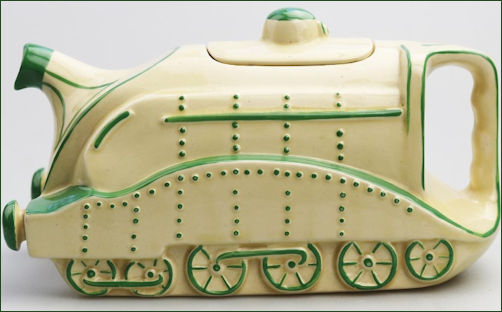
James Sadler's version of the Mallard - images sourced from : antiques.co.uk with thanks
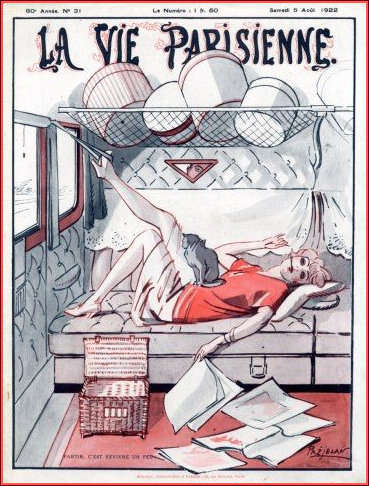
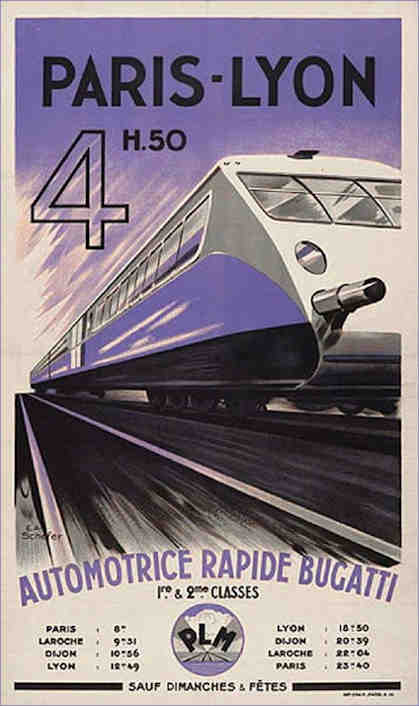
Looks like cars weren't the only transport Bugatti favoured!
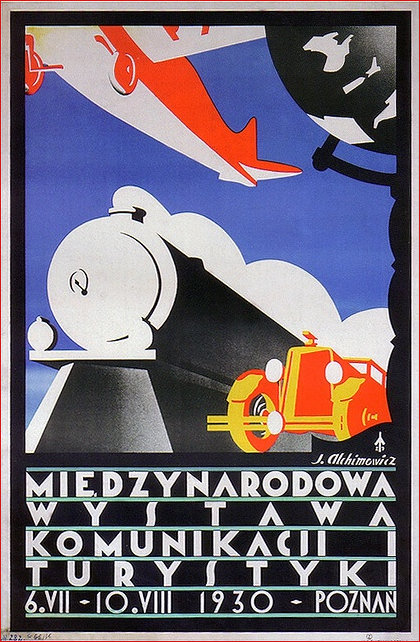
International Communications & Tourism Exhibition held in Poznań, Poland 6th July to 10th August 1930
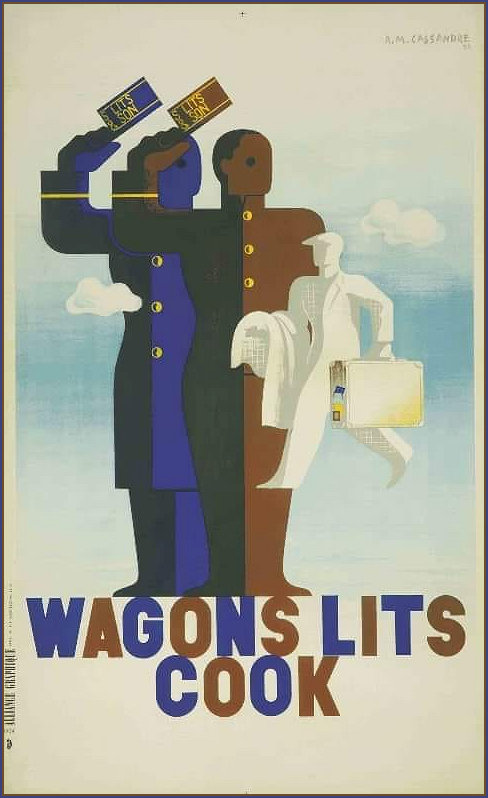
A 1934 poster for Cook Travel by A.M. Cassandre (1901-1968) probably better known for his imposing poster of the 'Normandie' and many 'Dubonnet' adverts - this unusual image sourced with thanks from Laurent Bonnins' Fb account
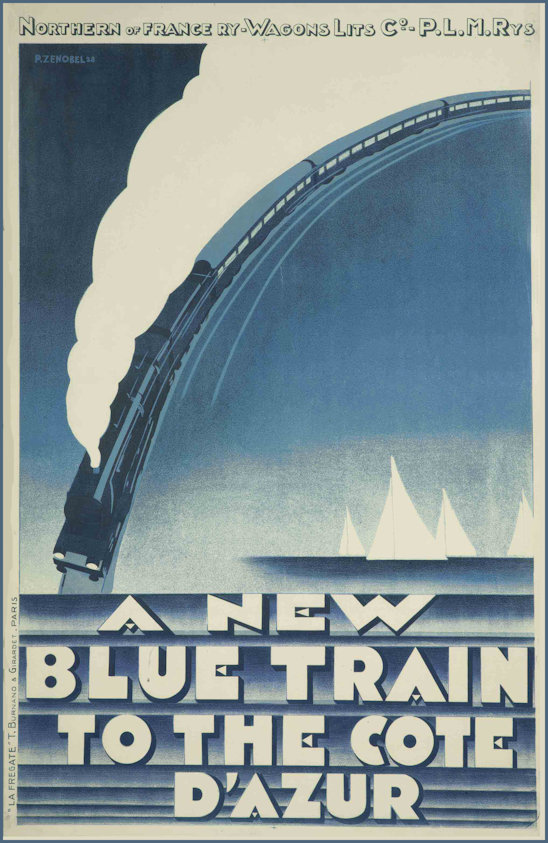
A new blue train to the Côte d'Azur by Pierre Zenobel (1905-1996) - image courtesy of and sourced from Christie's
Trains & Boats & Planes - all popular in the 1930s
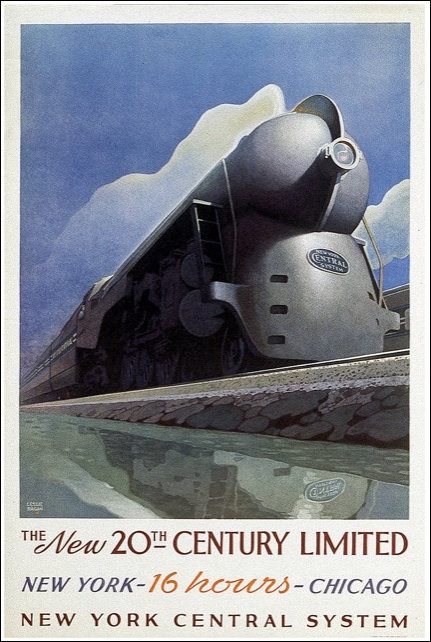
In March, 1938, the New York Central received the first of ten Hudson locomotives built by Alco and streamlined following a design by Henry Dreyfuss - image courtesy of steamlinermemories
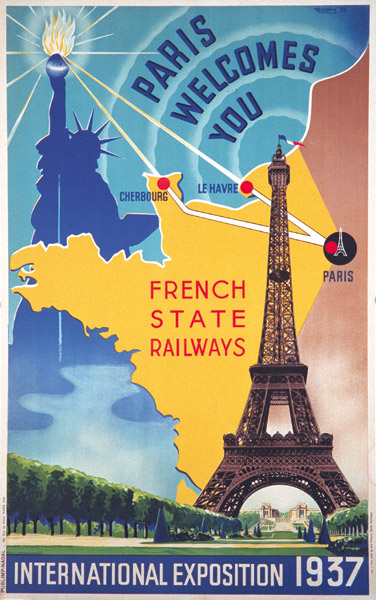
The Great Expo of 1937 in Paris praising and advertising rail travel by means of a poster promoting French State railways all the way from the USA
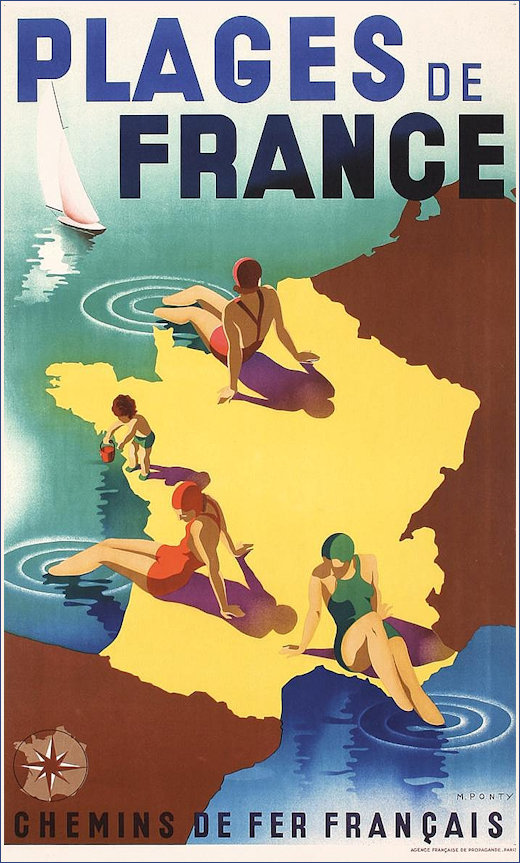
Visit the beaches by rail - image courtesy of invaluable.com
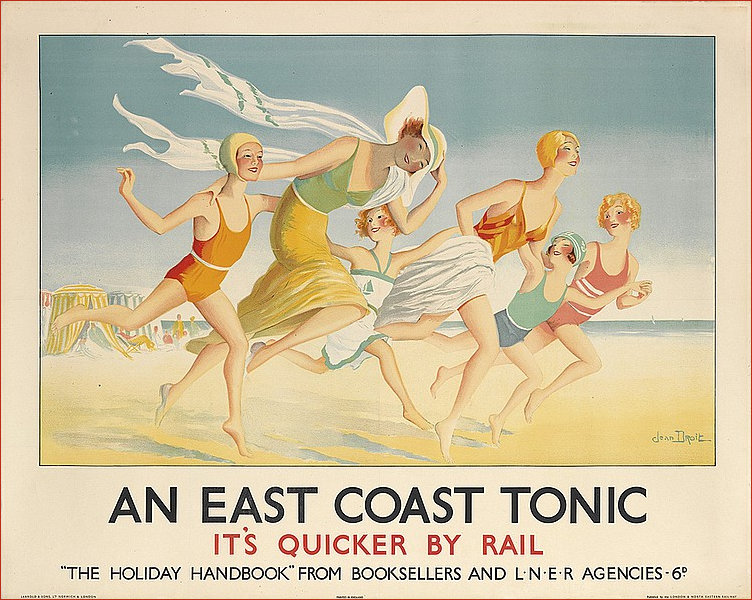
Jean Droit (1884-1961) (famously known for his many Martini-Rosso adverts) - 'An East Coast Tonic' - circa 1930 - Image sourced from : Invaluable.com
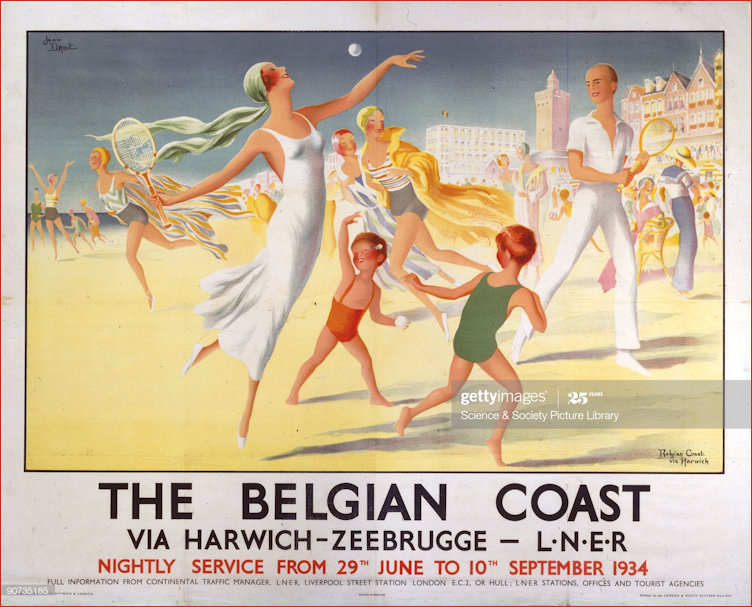
'The poster shows an elegant family playing beach tennis on the sands at Zeebrugge'. Artwork by Jean Droit. (Photo by SSPL/Getty Images)
The Belgian Coast, LNER poster, 1934. BELGIUM - MARCH : Poster produced for London & North Eastern Railway (LNER) to promote its services between Harwich and Zeebrugge, Belgium. LNER offered a nightly service between Harwich and Zeebrugge in the summer of 1934.
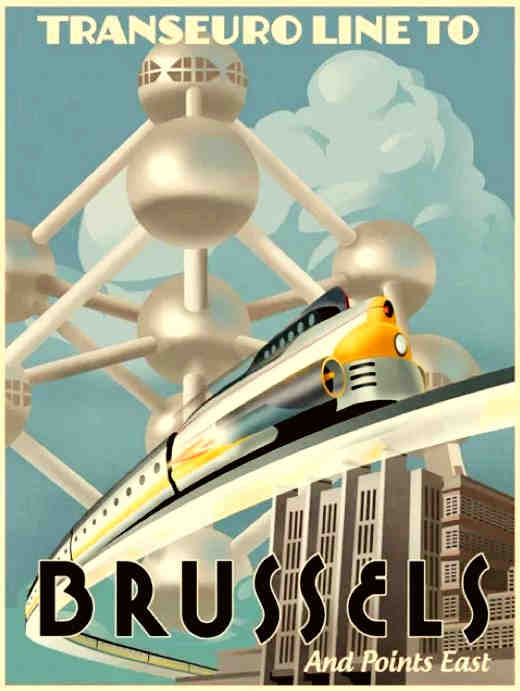
Provenance unknown - 'space age' poster extolling a mono-rail like train circa 1930s.

Remarkably this poster is available in English and German - circa 1931
The German railways of the 1930s developed the so-called Fliegende Züge. The prototype, called Flying Hamburger, became the most well known. They achieved a top speed of 160 km/h and brought German cities closer together. Besides these diesel multiple units the Deutsche Reichsbahn also commissioned fast trains with electric and steam traction. Hitler took the credit for the success of the Schnelltriebwagen, after which World War II put an end to their continued development. Text Source : retours.eu
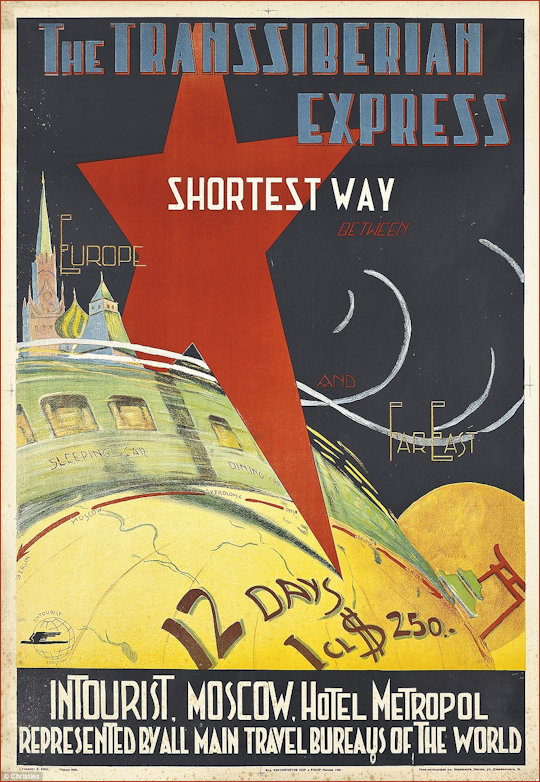
Stalin's idea of extolling the virtues of the Trans-Siberian Express - Image courtesy of Christies Auctioneers via the Daily Mail
As I was searching transport details I found The Coronation Scot. I didn't know this existed although I have always been a big fan of the shiny blue Mallard. Thanks to the National Railway Museum Blog for an excellent insight. As with London Transport all the train artwork is so inviting!
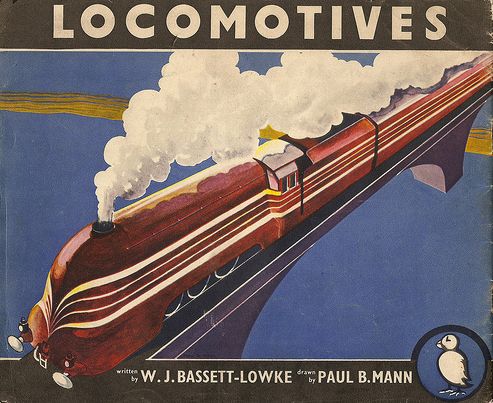
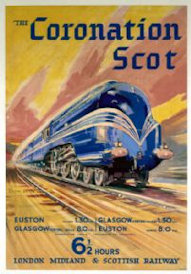
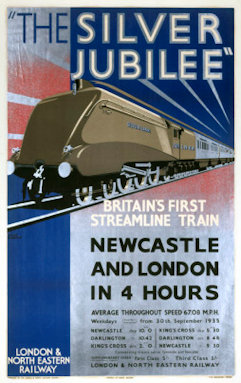
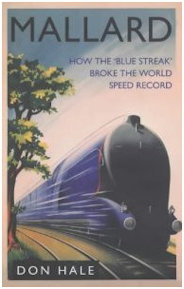
From l to r images of The Coronation Scot, Silver Jubilee and the Mallard trains
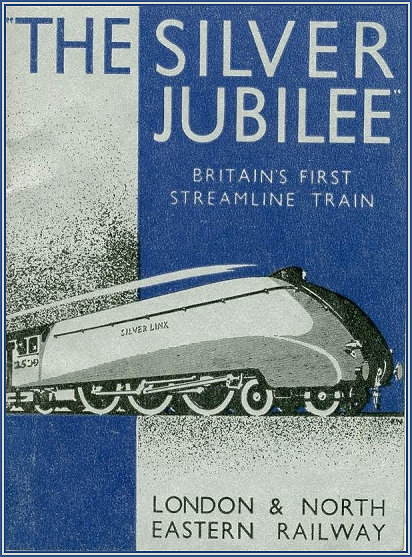
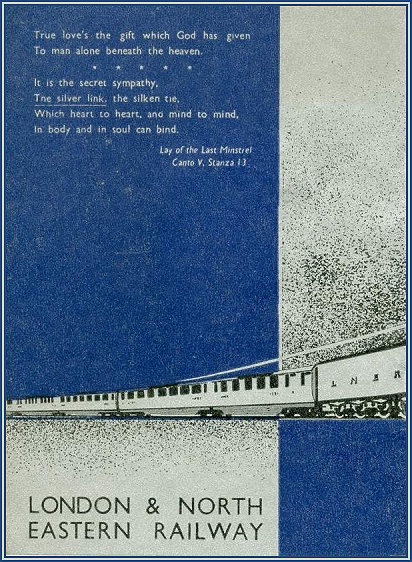
Images and description sourced from : Monkshill Books
Britain’s First Streamline Train, advertising pamphlet giving a description of the service and how to book, a description of the locomotive and the train with a double-page layout plan (see picture below), route-map, timetable with mileages, running times and speeds, details of connecting services at Darlington and Newcastle, miscellaneous useful information (e.g. the train attendant “will undertake the posting of letters or dispatch of telegrams”) and list of available souvenirs, printed throughout in blue and silver ink with black text, stapled pamphlet, 16 pp, bottom front corner a trifle creased, staples a little rusted, otherwise in very good condition, London & North Eastern Railway 1936 There cannot be many pieces of railway advertising bearing a quotation from a Walter Scott poem – see the rear cover.
King George V’s Silver Jubilee was in May 1935, and it would appear that the railway company had this pamphlet printed to advertise the service from the following 1st May. However, for some reason the timetable slipped, and there are pasted-on labels changing the date to 28th September, and further pasted-on labels on pages 13 (the times of connecting services) and 14 (the dates in 1936 and 1937 when the train will not run).

Fit for a Queen and I love the pseudo-tartan design - genius piece of artwork by Reginal Mayes from 1948! Image sourced from Pinterest
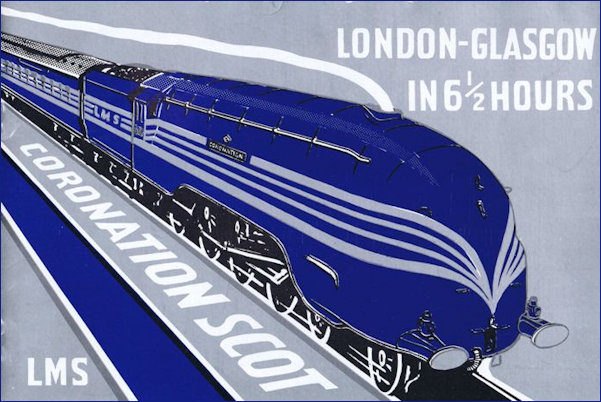
An image from 1937 for the Coronation Scot as seen on the Front cover of a special advance publicity brochure for the Coronation Scot train, produced by LMS in 1937, and printed in black, blue and silver ink - sourced from the Brighton Toy & Model Museum
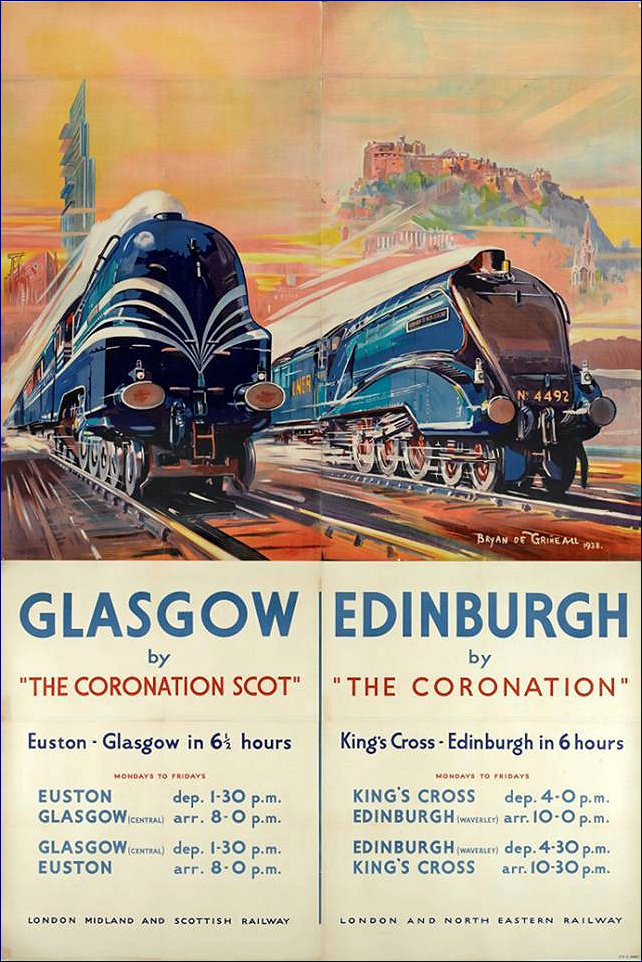
Magnificent joint LMS and LNER poster showcasing the 'Coronation' pairing - image sourced from the David Heys Collection/Pinterest via Trains on the Brains/Fb
Authentic images from the 1920s/30s of Kurt Davis' grandparents attending an exhibition featuring (presumably) the latest railway designs - regrettably no further provenance at this time but I am gratified to see not only an example from the Coronation Class (left) but also one of those peculiar little 'Flash Gordon Rocket' type trains (right)
1939 - World's Fair in New York - The Royal Scot by Invitation
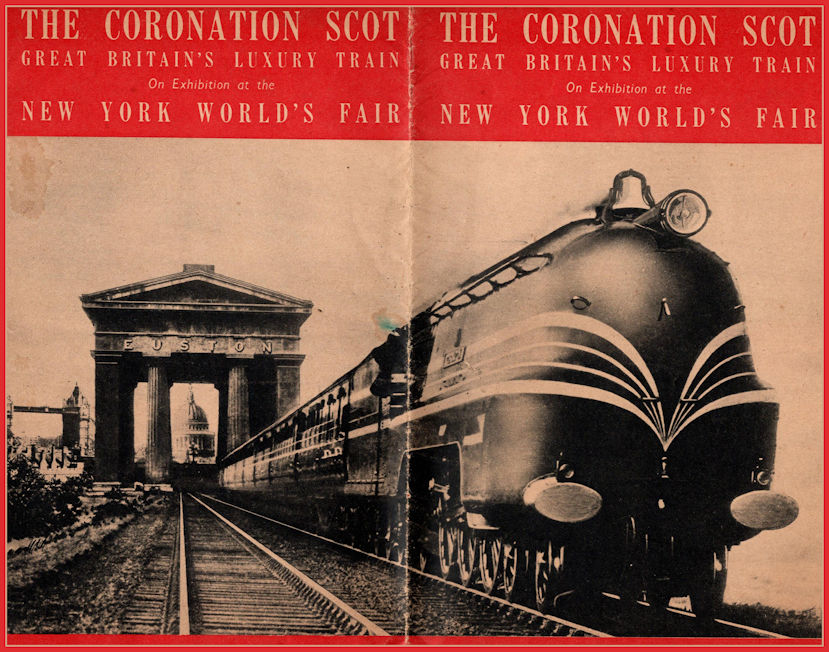
This is a giant folded pull out was used at the World's Fair to promote The 'Coronation Scot' delivered to NY in 1939 to be specifically exhibited - allegedly it was not returned by the Americans until after WWII - scan of the front and back of the fold-out souced from my own private collection.
Reunited one last time - six of Britain's greatest steam engines
The Daily Mail dated 20th February 2014 carries a piece paying homage to these superbly designed steam engines:
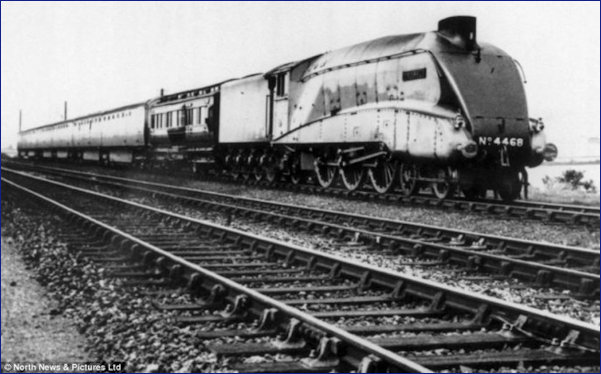
World beater: The Mallard pictured in 1938 as it was about to start its record-breaking run along the East Coast Mainline when it hit 126mph - images courtesy and copyright of North News & Pictures Ltd.
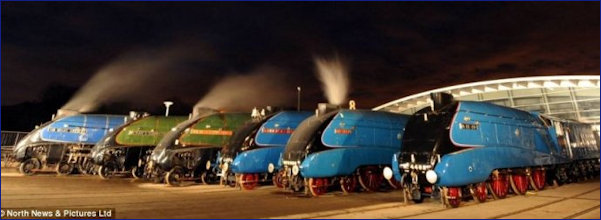
As well as Mallard, the six include Sir Nigel Gresley - named after the designer - Union of South Africa, Bittern, Dominion of Canada and Dwight D. Eisenhower - images courtesy and copyright of North News & Pictures Ltd.
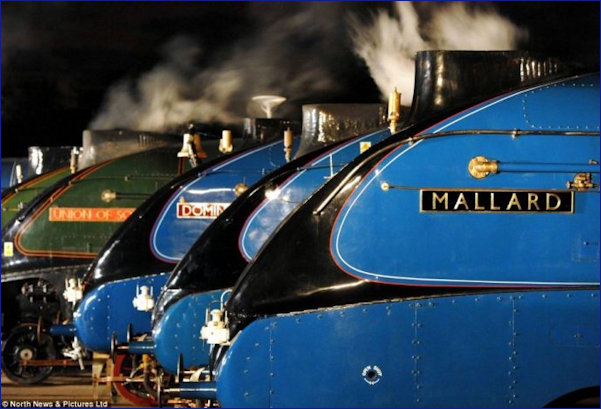
The world's fastest steam locomotive, Mallard (far right) and six of her sister trains were gathered in Shildon, County Durham, yesterday - images courtesy and copyright of North News & Pictures Ltd.
Reunited one last time - six of Britain's greatest steam engines including world record holder Mallard and its five surviving sister locomotives
- Six A4 class locomotive brought together to celebrate Mallard's steam speed world record 75 years ago
- Mallard reached 126mph on the East Coast line near Peterborough in 1938, a record which still stands
- More than 50,000 people have so far visited the six engines which are at the National Railway Museum
- Other engines are Sir Nigel Gresley, Union of South Africa, Bittern, Dominion of Canada and Dwight D. Eisenhower
Nicknamed Streaks due to their speed and sleek lines, they were the pride of Britain’s railways. The A4 class locomotives were built in the Thirties to haul the fastest express passenger trains from London to York, Newcastle and Edinburgh. With their revolutionary design inspired by Bugatti race cars, they were the first of their kind to speed along the tracks at 90 to 100mph, 25mph faster than their predecessors. In their heyday, it was every schoolboy’s dream to drive one — and they still evoke all the romance of the golden age of steam, when British still meant best. Now the last remaining six have been reunited for one final time.
Among them is the legendary Mallard, which still holds the record for the fastest steam locomotive in the world after hitting 126mph at Stoke Bank, near Grantham on the East Coast main line in 1938 — a record that’s unlikely ever to be beaten. The attempt was set up amid great secrecy, not only because the Germans had achieved over 120mph, but also because rival companies in Britain could have stolen a march on the daring record bid. It was driven that day by Joseph Duddington, 61, assisted by fireman Thomas Bray, whose back-breaking job it was to shovel tons of coal into the white-heat firebox as the rocking train hurtled down the track.
The 75th anniversary of that epic event, in July last year, triggered the bringing together of the six locos. They are the only surviving examples of the 35 of their kind that were designed by genius Sir Nigel Gresley for the London & North Eastern Railway and which marked the zenith of British locomotive building. Polished, oiled and gleaming, the six 100-ton steam locos have been lined up side by side for a week-long display named the Great Goodbye at the National Railway Museum’s site at Shildon, Co. Durham. Two — Dwight D. Eisenhower and Dominion of Canada — were brought over from museums on the other side of the Atlantic for the reunion, which is attracting tens of thousands of visitors from all over the world.
Like Mallard, which is part of Britain’s National Railway Museum collection, those two are no longer in running order, but merely exhibited in gleaming condition.
But the other three — Bittern, Sir Nigel Gresley and Union of South Africa, owned by separate rail enthusiasts — still earn a living hauling steam charters on the main line. Anthony Coulls, senior curator of rail vehicle collections at the museum, said: ‘These locos were built to create an impression and they definitely still do! The drivers were the fastest men on earth — the Formula 1 drivers or airline pilots of their day. ‘These were prestige trains and to be in charge of one was exciting and glamorous.’ The design was a massive success in public relations terms — the public adored them. One of the A4s — fuelled by up to seven tons of coal — could race between London and Edinburgh, picking up water on the move from long troughs laid between the rails. Because the work of the two men of the footplate — the driver and fireman — was so arduous, Gresley designed a tiny corridor through the tender that would allow a relief crew to take over on the move.
Soon after Mallard’s record-breaking run — which left the workings of the thrashed loco needing some repair — World War II would put an end to the most glamorous era on British railways, with the glorious Streaks stripped of some of their streamlining for the duration and plodding along at more pedestrian speeds, their paintwork stained and dirty. Gresley’s hopes of even higher speeds — 130mph was thought possible — went unfulfilled. Then diesel and electric locos took over from the Fifties and today reach the once amazing speed of 125mph on a daily basis. But most railwaymen admit today’s trains lack the glamour and looks of the Streaks. And yesterday, the surviving A4s were back at their gleaming best. Among the visitors was one Mallard David Elcoat — who was born in 1951 and named after the locomotive. His father was not only a railway enthusiast, but also a loco driver with the rival London Midland & Scottish railway. The museum has copied his birth certificate for their records. A one enthusiast said: ‘These locos were just superb, and still are. After all, you can’t imagine some-one naming their child after a diesel, can you?’ Source : Daily Mail | Reunited - the Mallard and her 5 sisters | For more information about the Coronation Class trains visit LMS Coronation Class (Wiki)
The Orient Express (1930s)
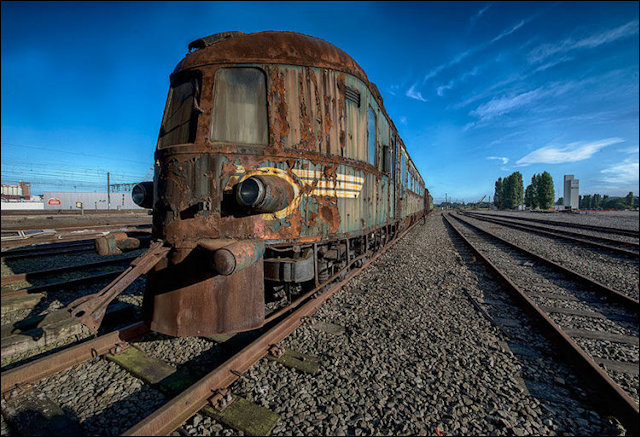
Image courtesy & © of Brian Romeijn/PreciousDecay.com via countryliving.com
The Pm36-1 "Beautiful Polish Maid"

Preparing to leave for Paris - a winner-in-waiting - image courtesy & © of Kolejowe Przysposobienie Obronne 1937
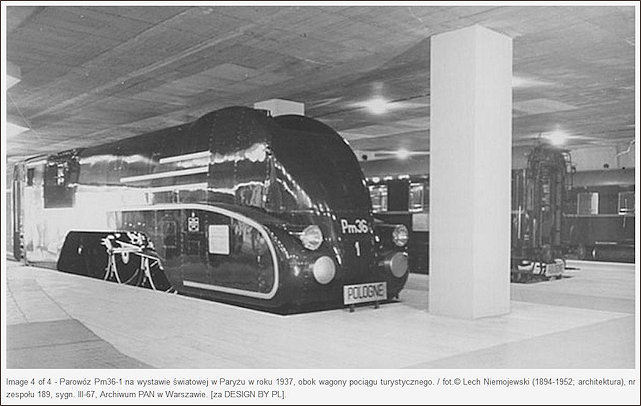
Exhibited in Paris - image courtesy & © Lech Niemojewski (1894-1952; architektura), nr zespołu 189, sygn. III-67, Archiwum PAN w Warszawie.
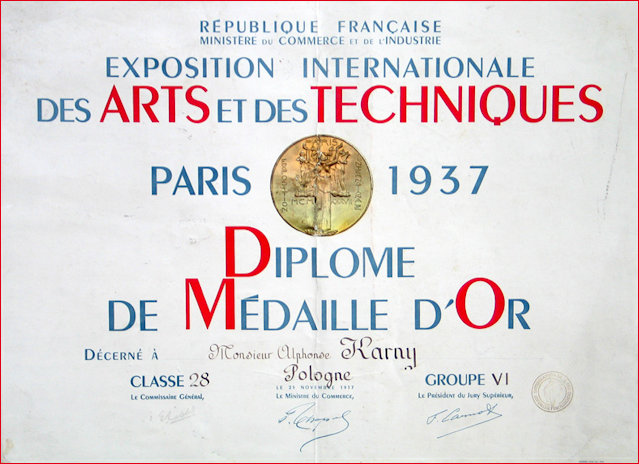
Gold Medal & official Certificate awarded to Poland for the innovative train design of the 'Parowóz (Locomotive) Pm36-1' - known as the 'Beautiful Polish Maid'
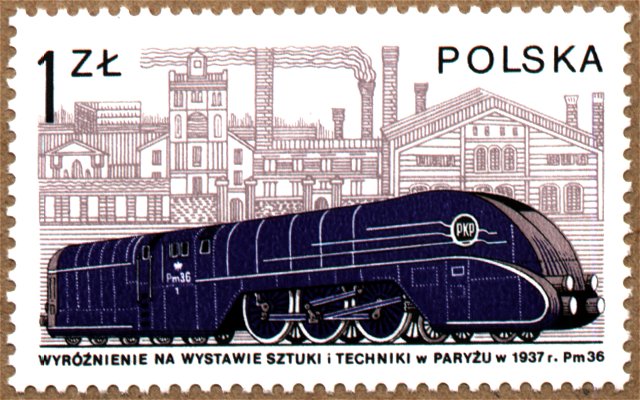
A 1978 postage stamp commemorating the success of the 'Beautiful Polish Maid' in the 'History of the Railways' series
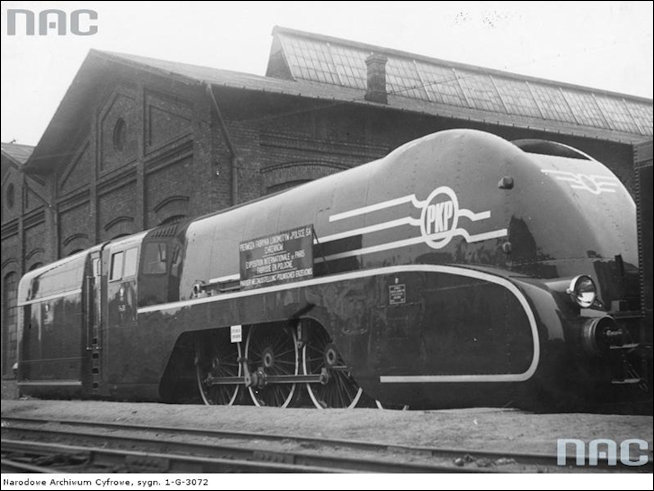
Image of the Pm36-1 courtesy and © of the Polish National Archive (NAC)
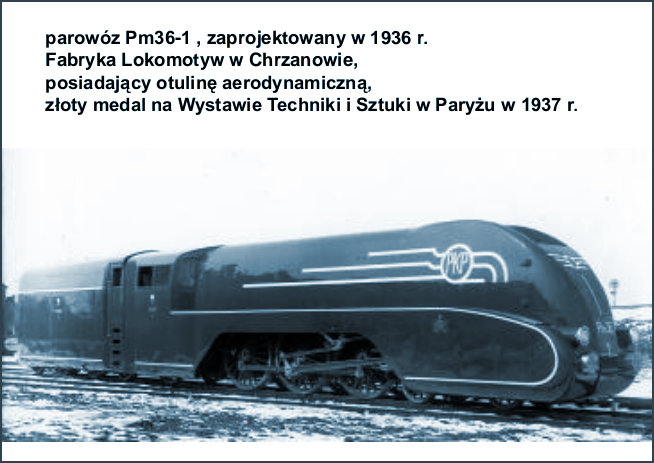
"Piękna Polka". Parowóz Pm 36-1 w granatowej otulinie i o opływowych kształtach (powstały w 1936 roku w biurze konstrukcyjnym Pierwszej Fabryki Lokomotyw w Polsce w Chrzanowie - FABLOK). Grand Prix dla fabryki lokomotyw z Chrzanowa. Materiały publikowane za zgodą Narodowego Archiwum Cyfrowego via exspace ("The Beautiful Polish Maid". Pm 36-1; the streamline moderne design is wrapped in navy blue (created in 1936 in the construction office of the First Locomotive Factory in Poland in Chrzanów - FABLOK). Grand Prix for Chrzanów's locomotive factory. Materials published with permission of the Polish National Archive (NAC) via exspace.
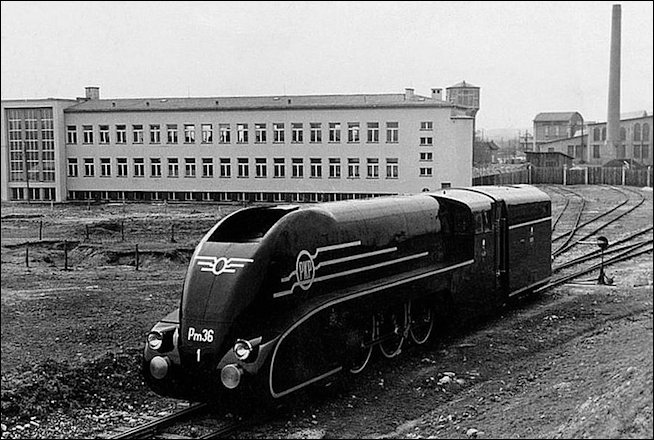

The Technical Specifications for "Piękna Polka" - image courtesy & © of rumia.edu
Full Technical specifications here | More about Fablok here | You Tube Archive here |
The 'Flash Gordon' trains
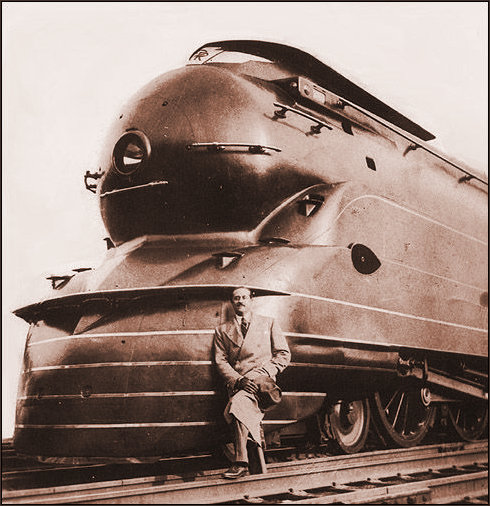
The man and his train ~ 1933, le brillant Raymond Loewy devant sa locomotive à vapeur K4S de la Pennsylvannie Railroad © www.deconet.com
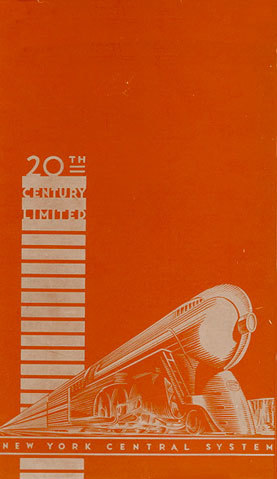

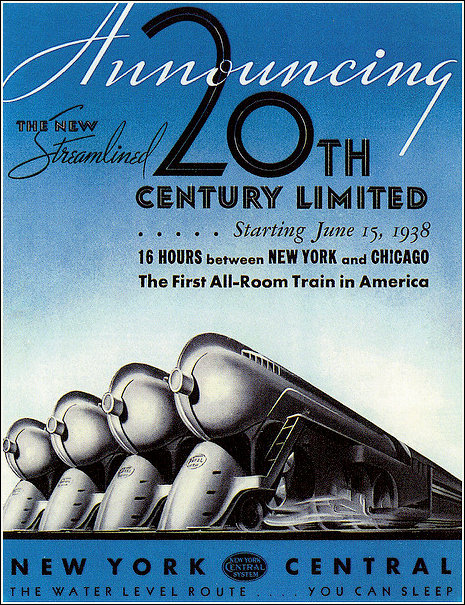
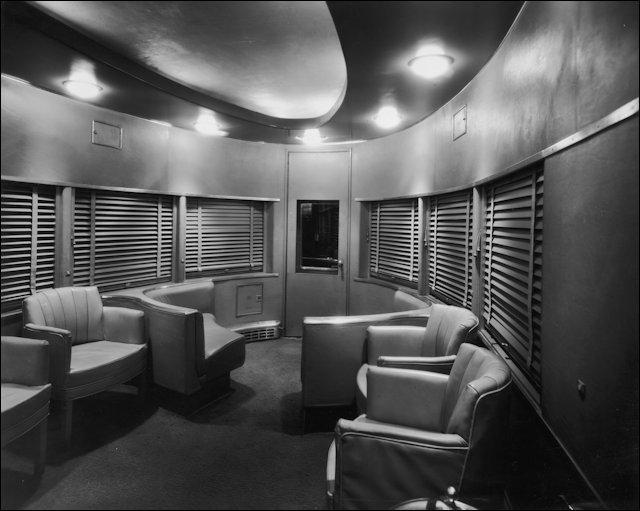
The observation deck in a Dreyfuss designed train with all designs complementing each other from the train itself to the advertising posters and menu cards!
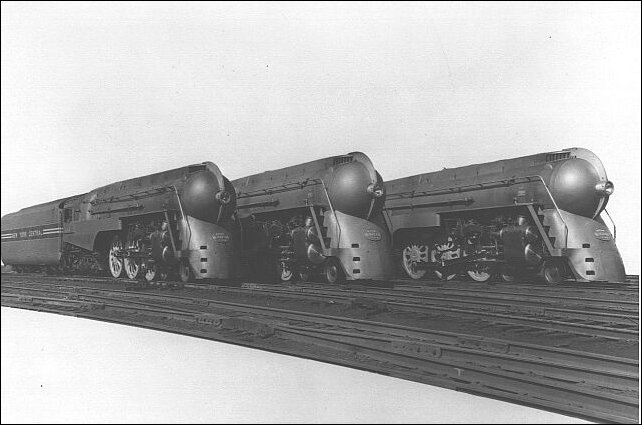
New York Central J3A Hudson 4-6-4: (Dreyfuss) 1938 - Streamlined with the impressive feature of their whitewall drivers - images courtesy of dieselpunk.org
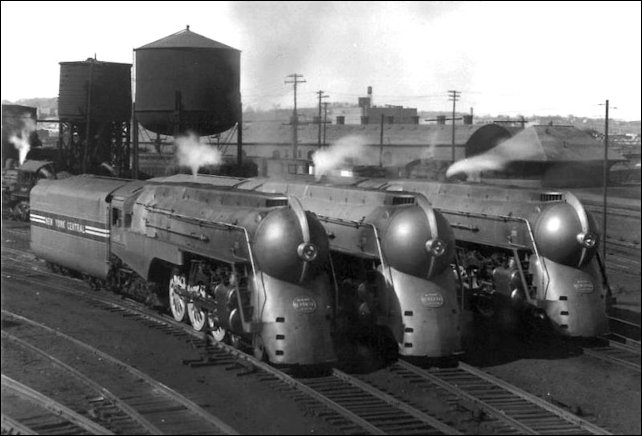
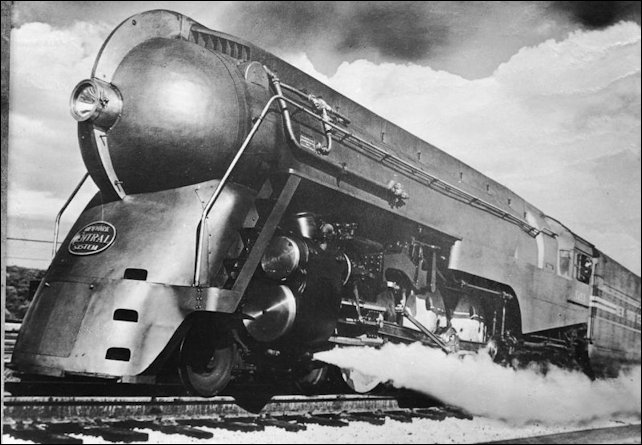
The Richard Dreyfuss-designed generation of 20th Century Limited trains, operated by the New York Central Railroad between 1938 and the end of WWII - images courtesy of steamlinermemories

Otto Kuhler designed the bullet-style streamlining Royal Blue in 1937 - image courtesy of steamlinermemories
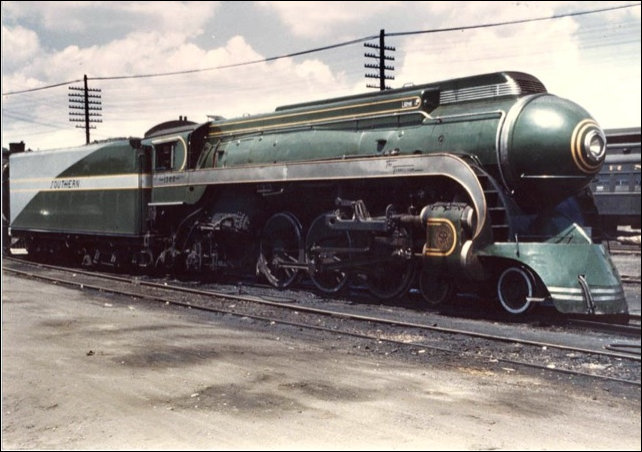
A bit of a hybrid - In 1941, Otto Kuhler streamlined a 1923 Alco Pacific locomotive for the Southern Railway for use on its Tennessean train, which (in conjunction with the Pennsylvania and Norfolk & Western) connected New York with Memphis. One of the Southern Railway’s bright green Pacific locomotives is displayed in the Smithsonian Museum, and the Tennessean locomotive combines this color scheme with the bullet-style of the B&O Royal Blue. - image courtesy of steamlinermemories
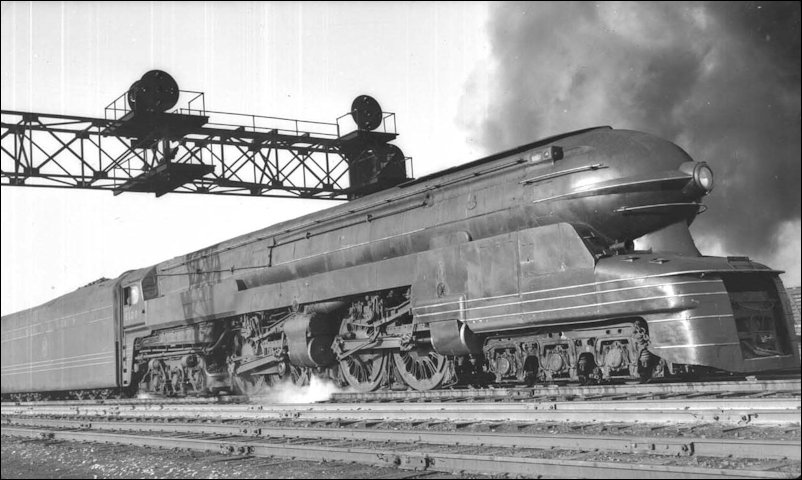
The Broadway Limited S1, a remarkably innovative “duplex” locomotive, meaning one with two pairs of cylinders, each driving four wheels - image courtesy of steamlinermemories
Lots more examples here
Mercury Streamliner - 1936
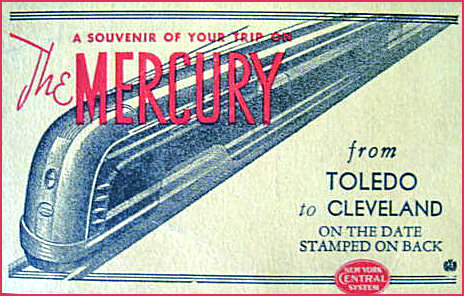
And a souvenir ticket to keep - image sourced from Wikipaedia
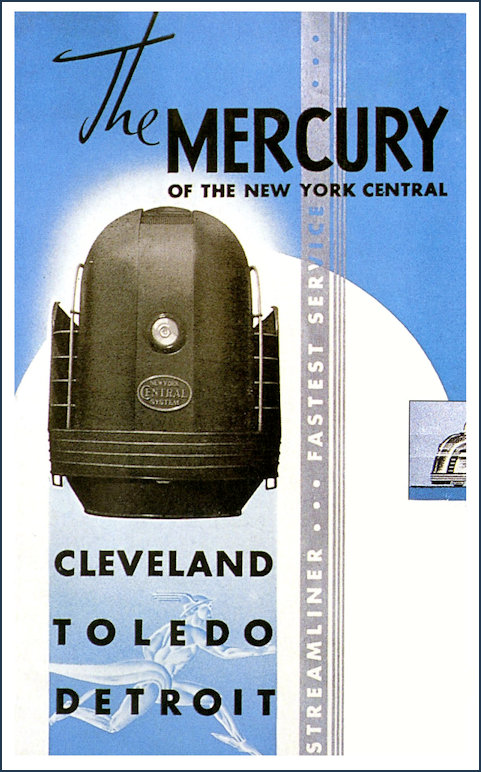
Image of Poster advertising the Mercury sourced from : WaterLevel.com
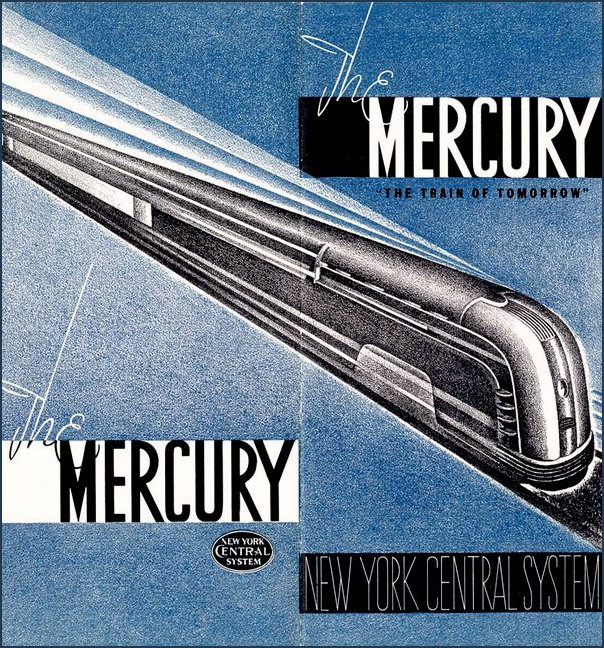
Billed as 'The Train of Tomorrow' - image courtesy of Dieselpunks
In the mid-1930s, the New York Central launched an experiment to enhance its passenger traffic in the midwest. The goal was a new streamlined service focusing on speed and innovation. "Mercury," the name of the Roman god of messengers, was chosen for its connotations of speed. The new train was marketed as the "Train of Tomorrow" (not to be confused with the General Motors concept train of the 1940s), reflecting the emphasis on innovation.
In 1934, Dreyfuss had gained attention for the New York Central with his streamlined design for the Commodore Vanderbilt locomotive. This was his first railroad design; he was best known for his work on consumer products like telephones, fountain pens and vacuum cleaners. In 1935, the Central asked him to take on the new project. Source : Dieselpunks
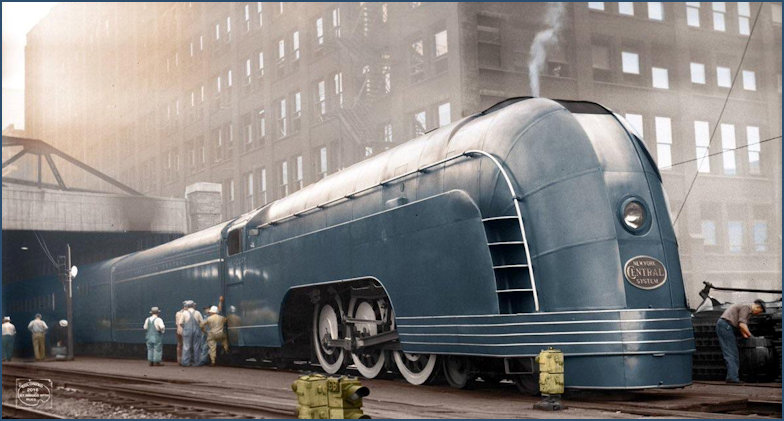
And finally the reality - image sourced from Reddit
Pullman Railplane - 1933

The Pullman Railplane streamlined design, painting by William Bushnell Stout, 1933 - sourced from Pinterest.
An example of 'Streamline Moderne' passenger train with a remarkable similarity to the MV 'Kalakala' the equivalent in a streamline moderne passenger ship.
Page refreshed : 6th August 2021 (G)